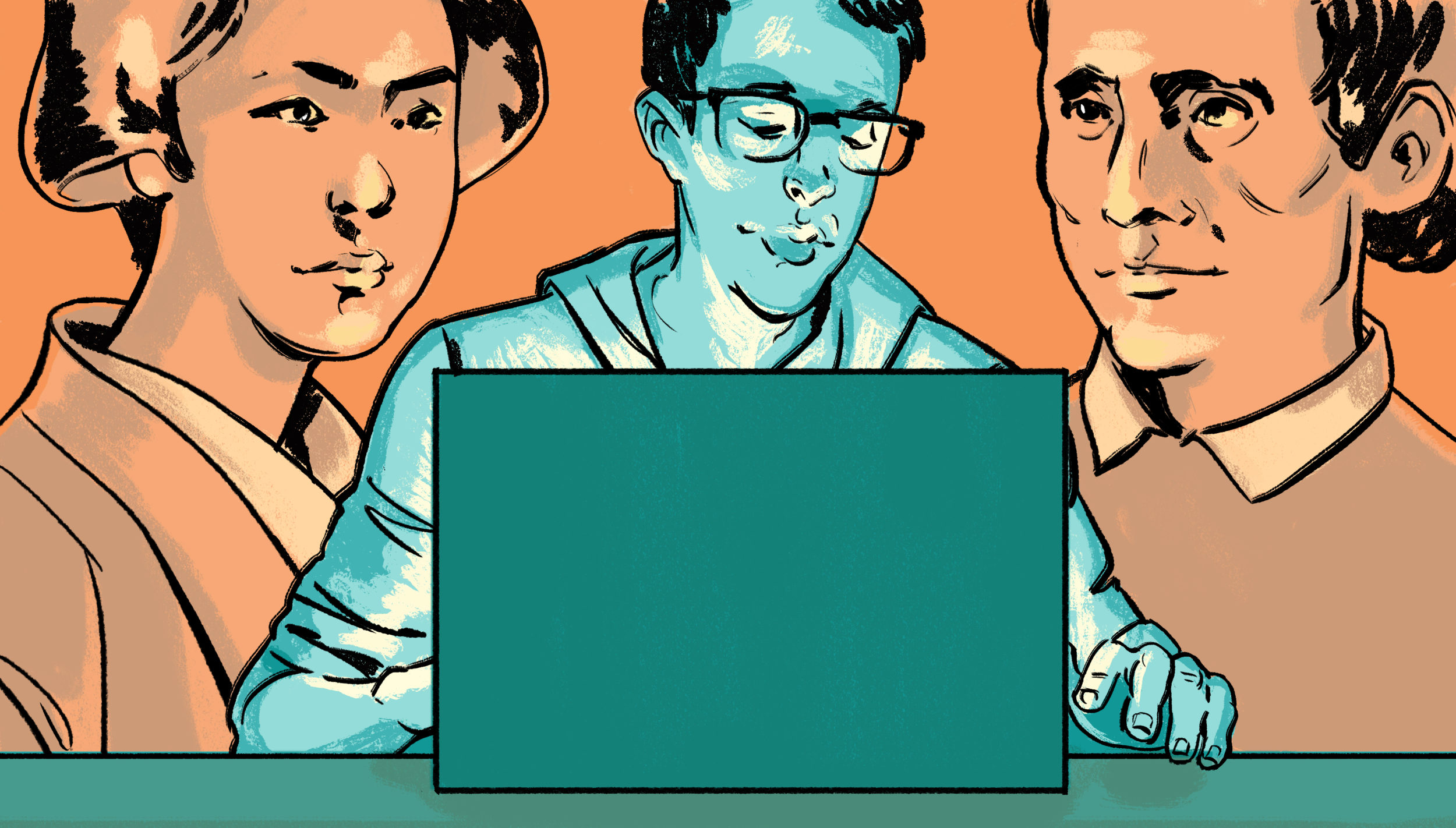In Roswell George Mills’ little piece of theatrical prose first printed in the amateur journal The Vagrant in 1919, the delicate (generically Asian) woman Loy Fah meets her beloved, strategically non-gendered Tahmat in a (generically Asian) garden.
Loy Fah bemoans her impending marriage, brokered by her father, and the two discuss their first meeting, their inevitable separation, and their inability to be apart. Rather than be separated, they consider ending their lives together. Seemingly a tragic tale of heterosexual love in the vein of Romeo and Juliet.
Then comes the punchline, “Silently, in the gloom, the two girls rise and move away over the frail bridge with its purple wreaths to the shrine of the god under the mulberry tree, where the poppies are sown, the white poppies and the blue.”
What a shock! They were two women all along!
To be frank, Mills’ Tea Flowers is a piece of cringe-worthy, melodramatic, Orientalist trash. Although, underneath the unfortunate, offensive, dated writing there is a subversive little piece of writing. Apart from the lesbianism in the reveal, it would be no stretch to imagine that Mills might have had some knowledge of kabuki traditions of genderbending; boys and men playing women in love with men, women playing men in love with women, women playing boys in love with men and women.
After all, queer history is a radical act of remembering, passing down knowledge through the ages. Despite our myriad of contributions to culture from all over the world, queer and trans people have been selectively forgotten from history in favour of something white-washed, sanitized and colonized.
Our history has been so violently, systematically erased that coming to an understanding of our messy, sexy, perverse, dark, gender-destroying history means indulging in seductive, taboo curiosity.
For a significant portion of history, this has taken the form of age-structured relationships — teacher-student, mentor-mentee, master-apprentice, often top-bottom. An exchange of intellectual knowledge, as well as sexual.
This was certainly the case for Roswell George Mills who, along with the famous lesbian poet Elsa Gidlow, founded Canada’s first gay and lesbian publication, Les Mouches Fantastiques. Gidlow documented their early years as friends in her autobiography, and described how: “Older men had been Roswell’s mentors when he was even younger. I also was grateful to them for helping to open up the worlds of thought and art.”
He nicknamed her Sappho and passed this knowledge on to her, a veritable reading list of queer literary icons: Wilde, Baudelaire, Verlaine, among many others and she, in turn, passed it along through her further research and her oeuvre.
In her autobiography, she speaks about how her readings, like Plato’s The Republic or Symposium, “did not exactly seem new learning, rather I was startled to find myself remembering. This began to happen often.” I think a lot of queer people, myself included, who first start experiencing art that reflects their desires and passions can relate.
Like Gidlow, I sometimes came to my queer learnings in a roundabout way. I learned of Mills through learning about Gidlow from my favourite queer history writer, Hamish Copley of the blog “The Drummer’s Revenge.” One thing always seems to lead to another.
I eschewed the age-structured relationship paradigm of learning, and in some ways the internet was my teacher. I first learned about Plato’s Symposium from John Cameron Mitchell’s Hedwig and the Angry Inch (picture an awkward, lonely queer boy hiding in his high school computer lab listening to an online musicals-themed radio station, who was blown away by “The Origin of Love.”)
Eventually I studied the Symposium under the expert tutelage of professor Terry Goldie in a York University course titled “Gay Male Literature.” Plato’s Symposium is just a single reference point of many.
When Jeremy and I started “History Boys,” I remember asking myself a single question: is there evidence of prehistoric homosexuality or gender diversity? “History Boys” was an exercise in learning, as much as it was about teaching; I wanted more of history that the Greeks and Stonewall. I wanted to roam backwards and forwards through history. I wanted genderfucking primordial priestesses, and horny kabuki boy-prostitutes, and amorous Arabic warrior-lovers, and thieving Victorian crossdressers. I wanted something hot, dangerous and adventurous, and I wanted to share it with everyone.
But if I learned one thing writing “History Boys,” it’s that discovering queer history has never been a straight line. It’s haphazard, it’s lost annotations and stories passed down through the ages.
Recently, when I rediscovered a short play I’d written in high school, I was reminded of Mills through my own bad, overwrought fiction. I wrote “Child of the Moon,” about a boy who secretly explores his gender expression through eyeliner, gender-bending and drag, creating part of himself he names Selene — (get it? Night . . . moon . . . Selene, the lunar deity . . . Symposium . . . a little heavy handed, right?) as a means of admitting to himself that he likes another boy. It’s pretty cringe-worthy, reading it now. And sad and adorable.
Back then, I wrote how “I wish I could share this feeling I have inside me now with everyone. This feeling that’s a mixture of what I’ve received from everyone . . . Everyone should know that they can feel like this. They should know that if you embrace your self, your true self, then you will be complete, and no one can take that from you.”
Unlike ethnic or national communities, queer and trans people aren’t born into our histories. A lot of us have to struggle through years of confusion and pain before we discover a continuity of brothers, sisters and lovers.
These days I hope I write a little better than I did in high school and, after the years Jeremy and I spent writing “History Boys,” I hope you learned a little something.


 Why you can trust Xtra
Why you can trust Xtra


